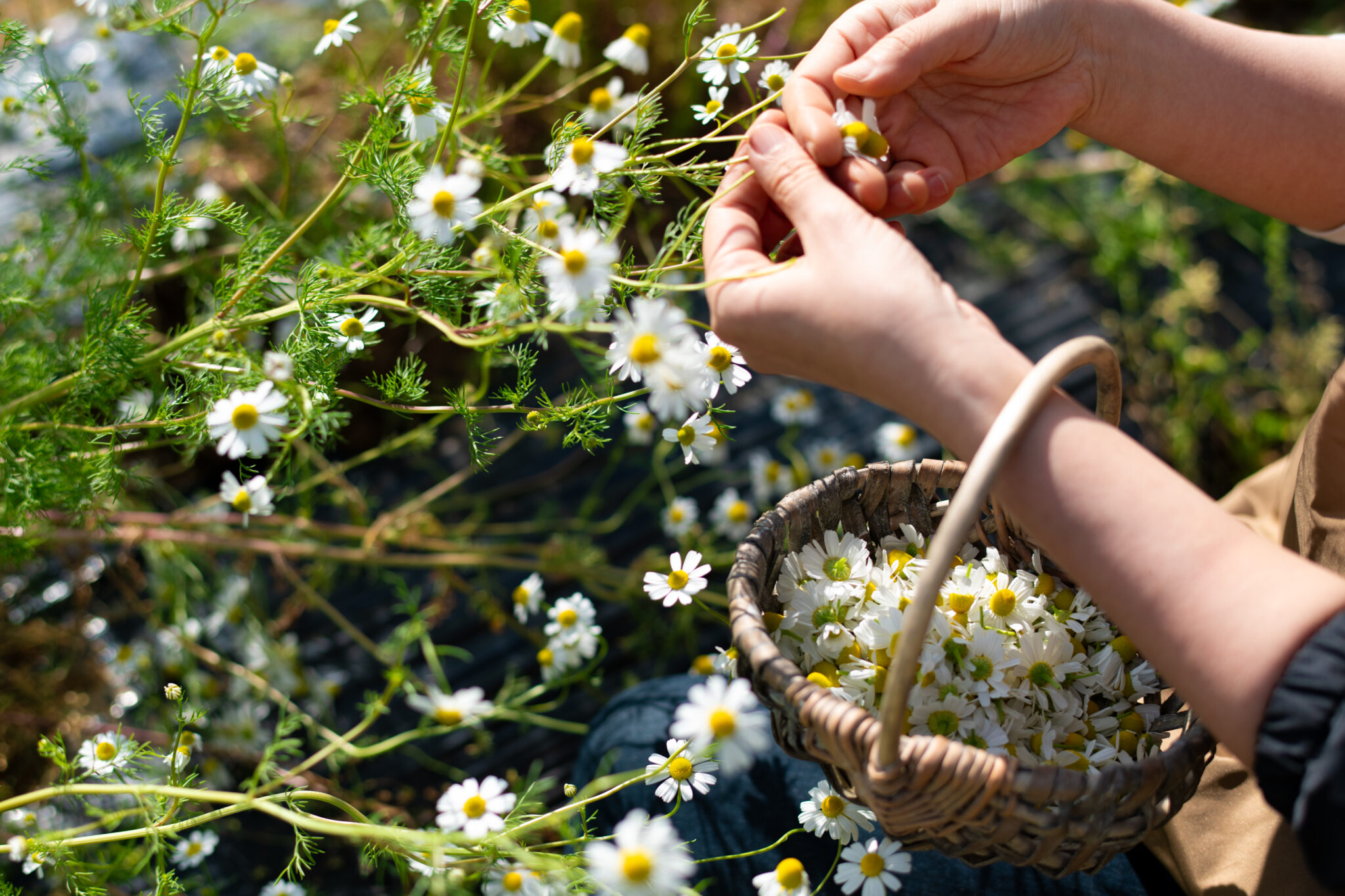PAYSAN Herb Farm is an agriculture and social cooperative in Ishikawa Prefecture which grows herbs that are highly acclaimed by food professionals.
DIG THE TEA visited the farm in the summer of 2023 where we interviewed President Tomohiko Sawabe about his agriculture and social cooperative and the success behind his delicious herbs.
The DIG THE TEA team was inspired by Sawabe’s vision of the future for agriculture and social cooperatives and his passion for herbs. To further explore the possibilities of herb cultivation we started a collaborative garden with him.
Our first collaboration started with growing various herbs in PAYSAN’s experimental gardens in a valley of Hakusan City, which is separate from PAYSAN’s main farm in Kahokugata Lagoon.
In the October 2023 article we reported on the work we did of making garden rows and planting German chamomile seedlings.
For this article we will report on the progress of our cooperative experiment as we harvest the chamomile flowers and plant new herbs.
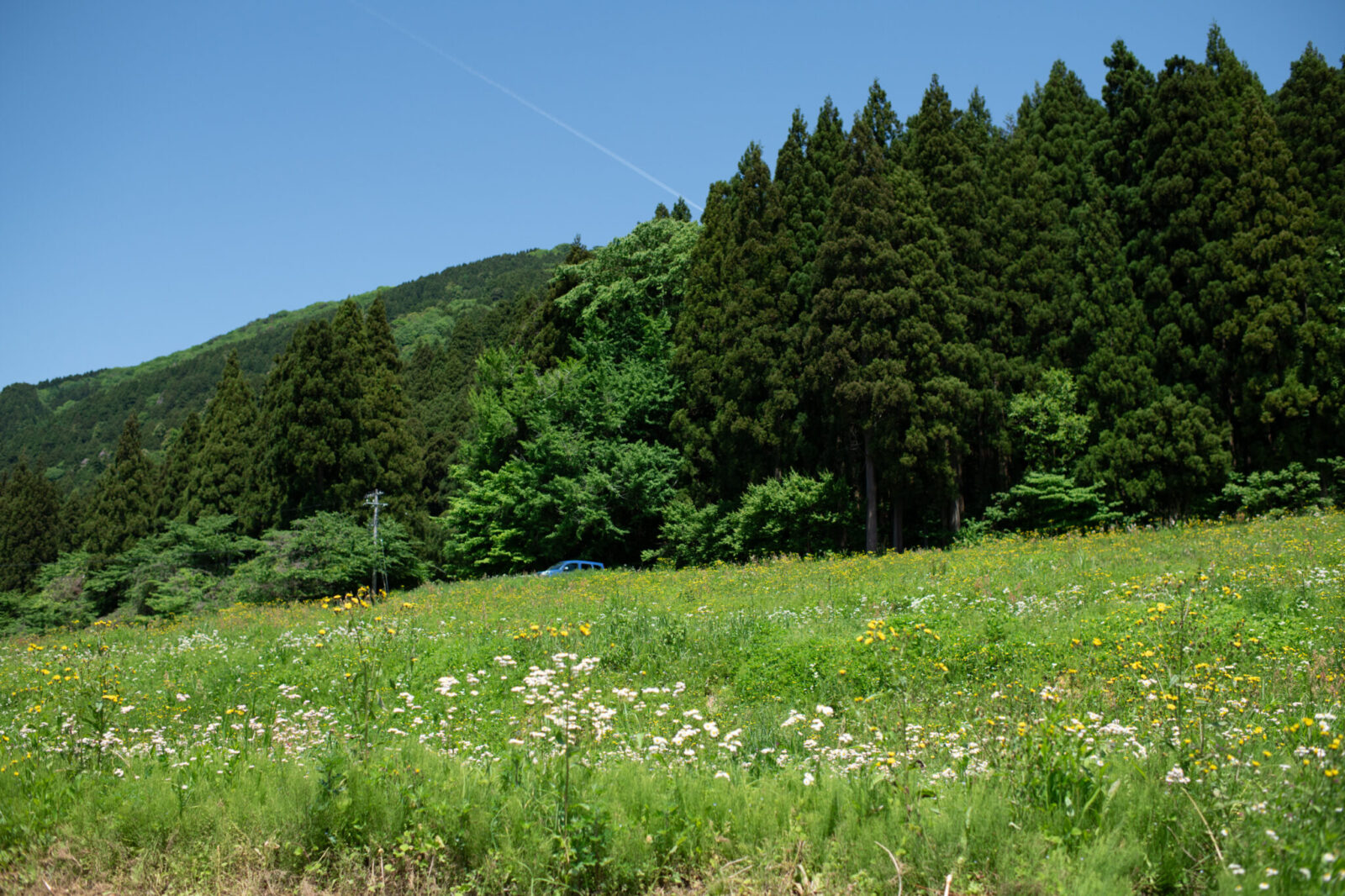
*We express our deepest condolences to the victims of the Noto Peninsula Earthquake that hit the region on January 1st 2024.
Visiting our experimental garden in the fresh green spring season
Just after the Golden Week holidays in early May, we made a trip to the Hakusan region for the first time in seven months. Although we have only been there a few times, we already felt a sense of returning to a familiar and special place.
Our experimental garden was originally a part of a terraced rice paddy. As we approached we noticed a small cluster of white flowers dancing in the breeze about halfway up the terraced fields.
At that moment, a breeze from the mountain surrounded us with the scent of sweet chamomile.
The chamomile bloomed in a single 50 meter long row. The seedlings we planted last fall, which were delicate and soft like baby hair, overcame the winter snow to become a magnificently full plant. Just seeing them in full bloom was moving.
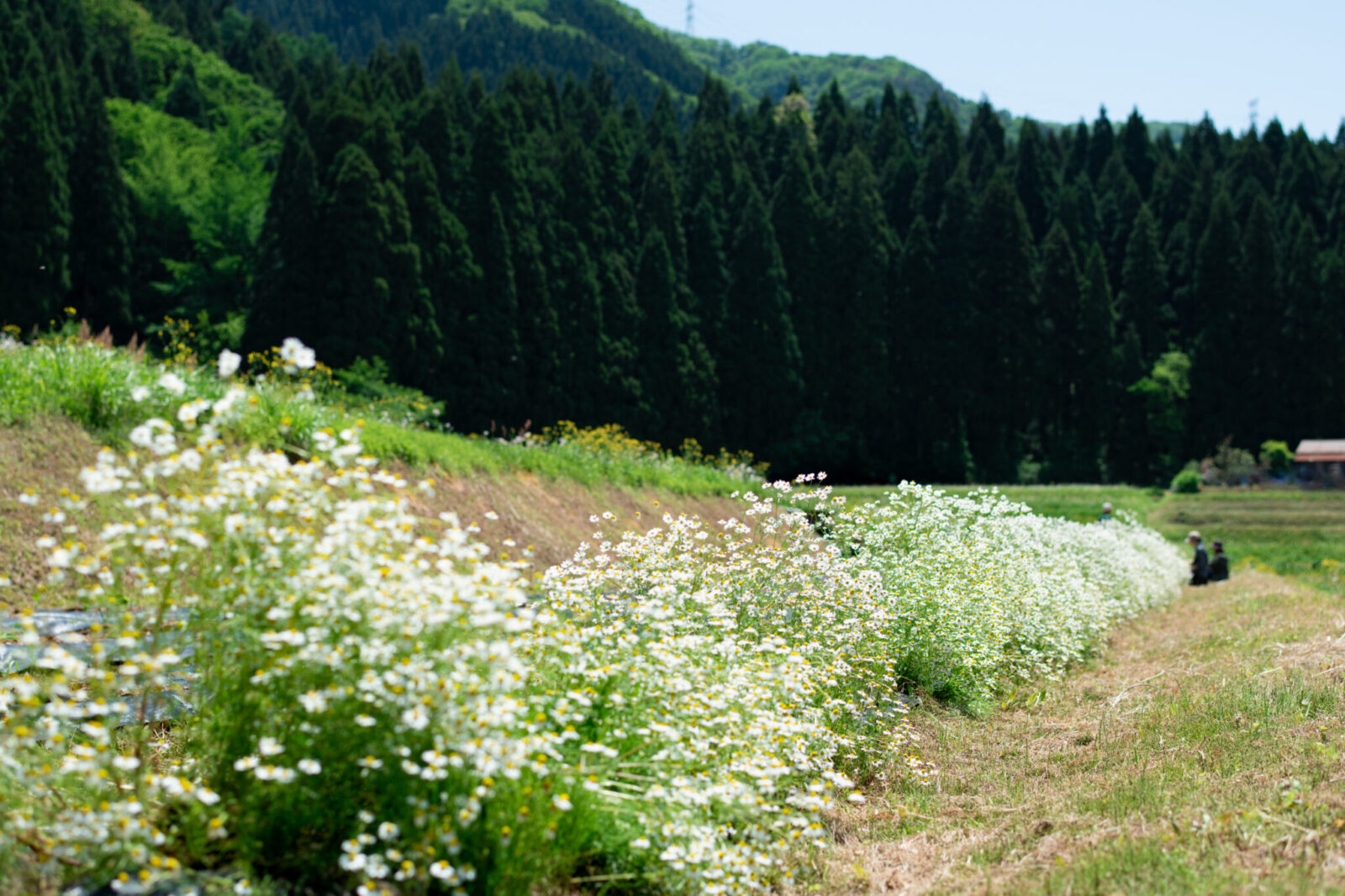
Sawabe had arrived at the garden before us and was preparing for our days’ work.
We first greeted each other and talked about the plans for the day. We were a little nervous before arriving in Hakusan because it was our first time visiting since the recent Noto Peninsula earthquake. We were relieved to find that the Hakusan region was not badly affected by the earthquake and to find Sawabe in good spirits.
Our stay for this visit was for two days and one night. On our first day we would work on planting new herbs and harvesting chamomile, and our second day would be dedicated to just harvesting chamomile.
Before arriving, we thought that harvesting chamomile would not take too much time, but we soon learned that we were very mistaken.
PAYSAN’S first experimental hops cultivation
Right away we got to work laying down the ground cover sheets to prevent the growth of weeds and using a specialized tool to plant the seedlings.

Our team and Sawabe decided together to cultivate not only chamomile, but also mugwort, lemongrass, dill, spearmint and hops.
We are especially excited about growing hops.
Sawabe expressed his excitement as well by sharing, “I have always been interested in growing hops so this collaboration with DIG THE TEA has provided me a great opportunity to put it into action. I look forward to experimenting to see if hops will grow well in this environment and how we can utilize the crop.”
Hops grow on vines that reach a height of six to ten meters and will be planted on the side of the field that is closest to the mountains. We will plant them alternately with spearmint seedlings to ensure space and height differences that will give them even sun exposure.
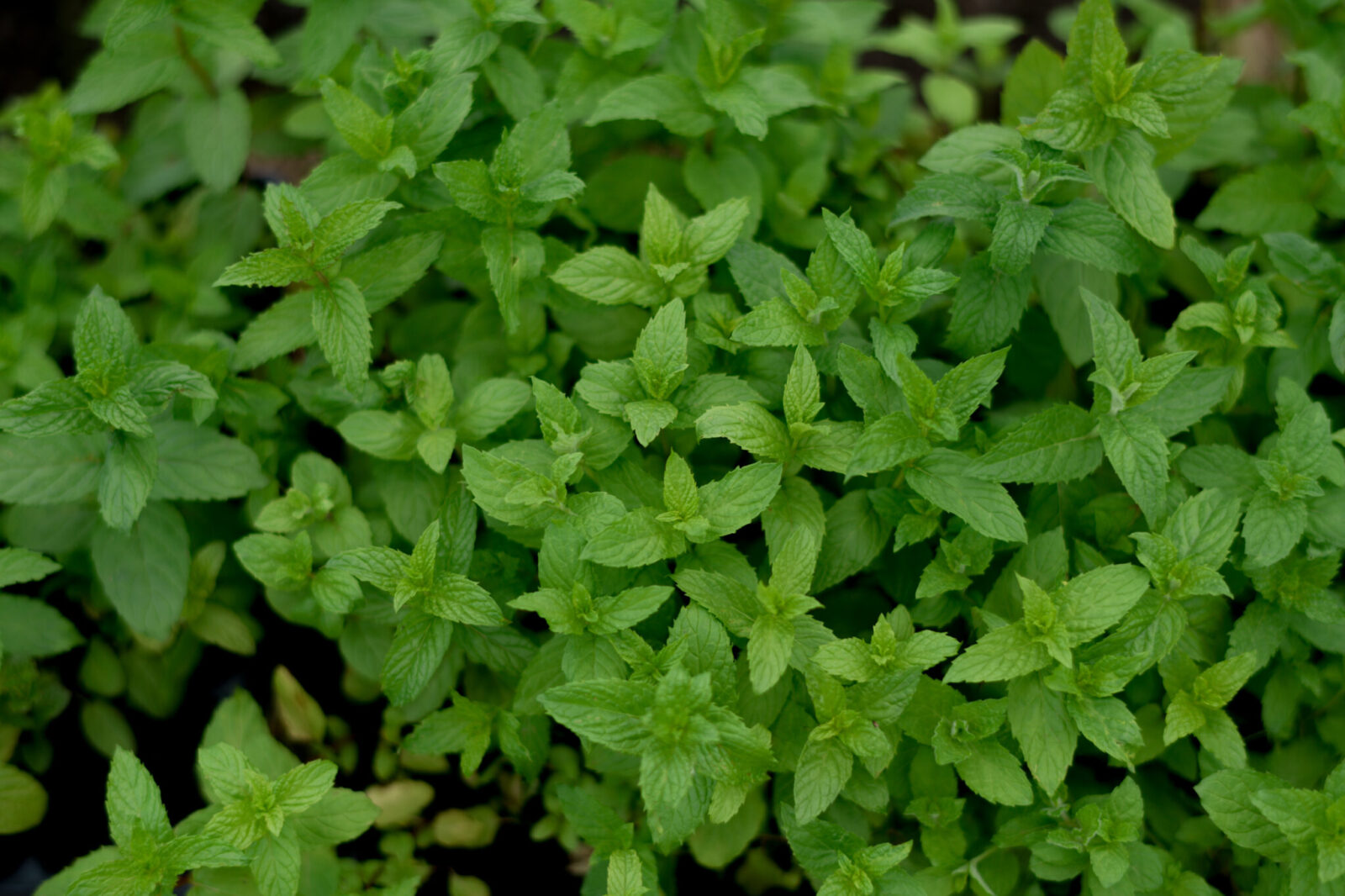

In the row next to the hops we alternately planted dill and mugwort seedlings. Next to that row we planted lemongrass seedlings while leaving an empty space between them.
Thanks to our previous experience of planting the chamomile seedlings, the planting process went smoothly and we were soon finished. Our next task was our long anticipated harvesting of the chamomile.
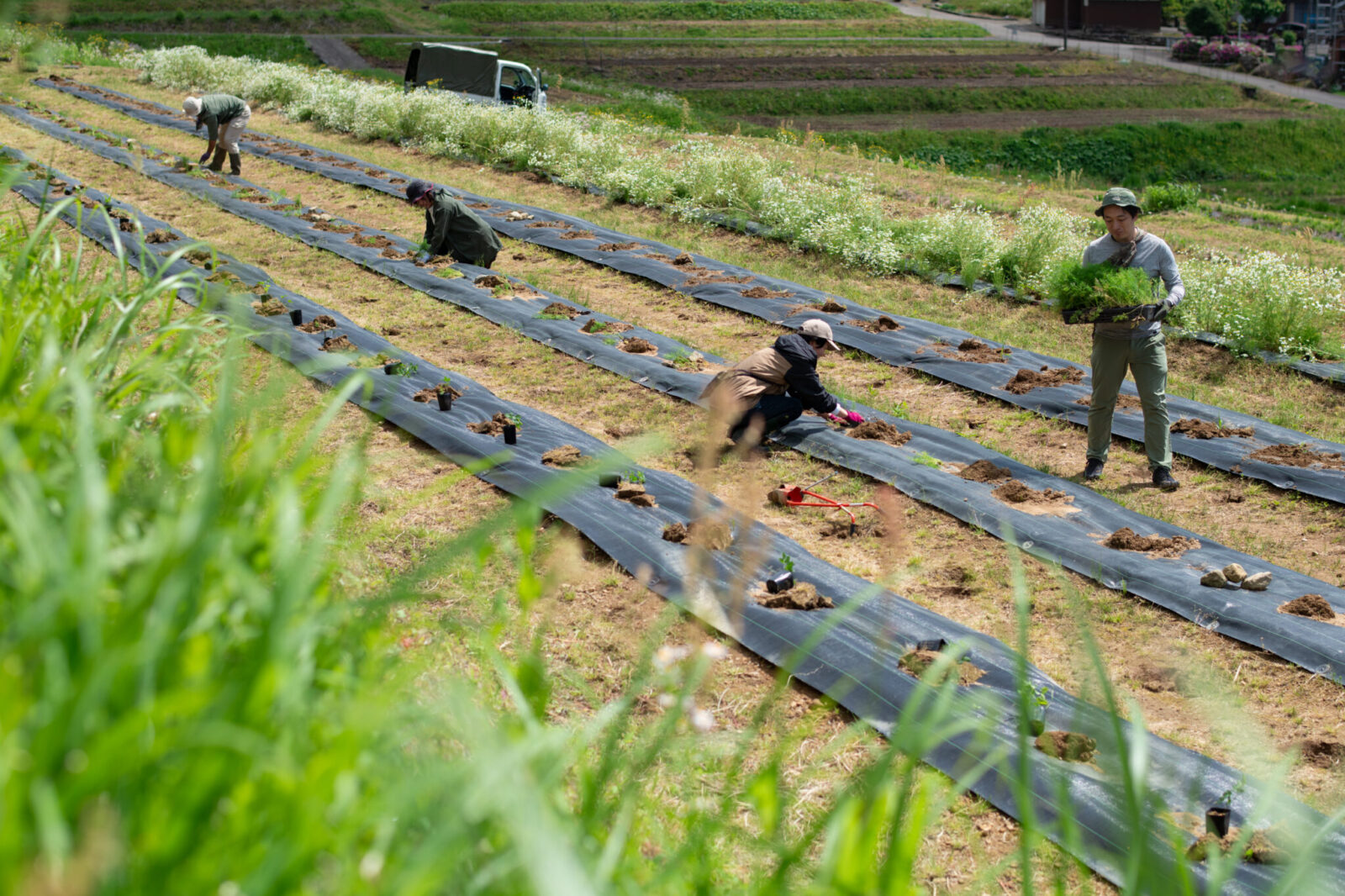
The chamomile flower is a symbol for enduring adversity
The chamomile has beautiful and elegant flowers that feature white pedals and a yellow center called the tubular flower. It is amazing to think about how much the plant grows compared to the seedlings we planted last year and the countless flowers it produces.
This region gets covered in deep snow in the winter.
Sawabe shared that the fields are completely covered in snow in the winter and the snow stalls the growth of the seedlings. When spring comes the seedlings grow all at once, so much so that it surprised Sawabe himself.
“Chamomile symbolizes the meaning of “enduring adversity” and to “stay strong in the face of hardship”. This herb is very resistant to cold. Nonetheless, I was worried about how it would fare under all the snow.”
“We grow our plants without pesticides or fertilizers and we haven’t tended to these chamomile plants since we planted them, but the flowers are just as beautiful as those we planted in our main garden in Kahokugata Lagoon. Since the temperatures are lower here in Hakusan, the flowers keep longer and can be harvested for longer too. This experiment was a huge success and it makes me want to plant PAYSAN’s chamomile in this location as well.”
We were all happy to hear that our chamomile experiment was a success. Now to begin harvesting the chamomile flowers.
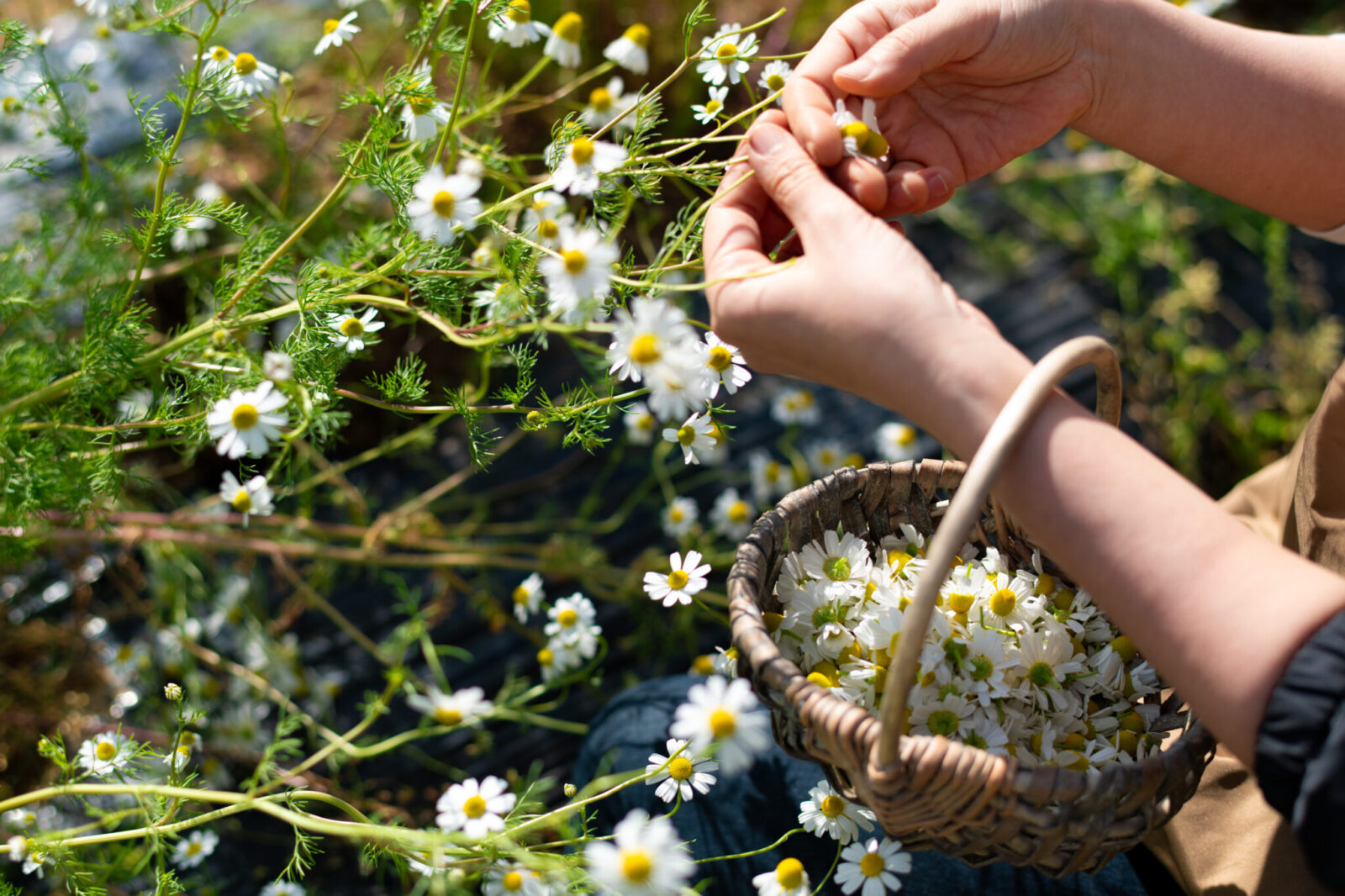
Chamomile produces many small flowers on each plant so the trick to harvesting the flowers is to pull upwards from the bottom of the stem and pinch off the flowers between your fingers.
Compared to the way we harvested tea leaves for when we made Awabancha, where we basically stripped the leaves off the tea trees, the process of harvesting chamomile is more like a gentle plucking.
The gentle and pleasant sound of the flowers being plucked filled the air as each hand worked in the field.
Sawabe shared, “Chamomile is known as the “doctor of the field” and is an excellent herb that provides nutrients to the soil. After the flowers are harvested, the plants are used as green manure (returned to the soil as fertilizer) to build better soil.” The benefits of chamomile are not only in its flowers.
While harvesting the flowers, we noticed that there were no insects that would be considered harmful pests on the plants.
Sawabe explained, “One of the major factors that attracts harmful insects is nitrogen in the soil which increases through the use of chemical fertilizers. This field used to be a rice field that used spring water from the mountains, so it is free of any unnecessary elements in the soil. On top of that, we cultivate our plants without pesticides or chemical fertilizers so there is little nitrogen in this soil. I think that is why there are so few harmful insects.”
A luxurious herbal tea made from freshly picked chamomile
According to Sawabe, the flavor and aroma of the chamomile comes from its yellow center (the tubular flower) and the younger, smaller and not fully inflated flowers have a more fruity flavor that is similar to honey or green apple.
On the other hand, the more mature and larger tubular flowers have a stronger fragrance and more potent flavor.
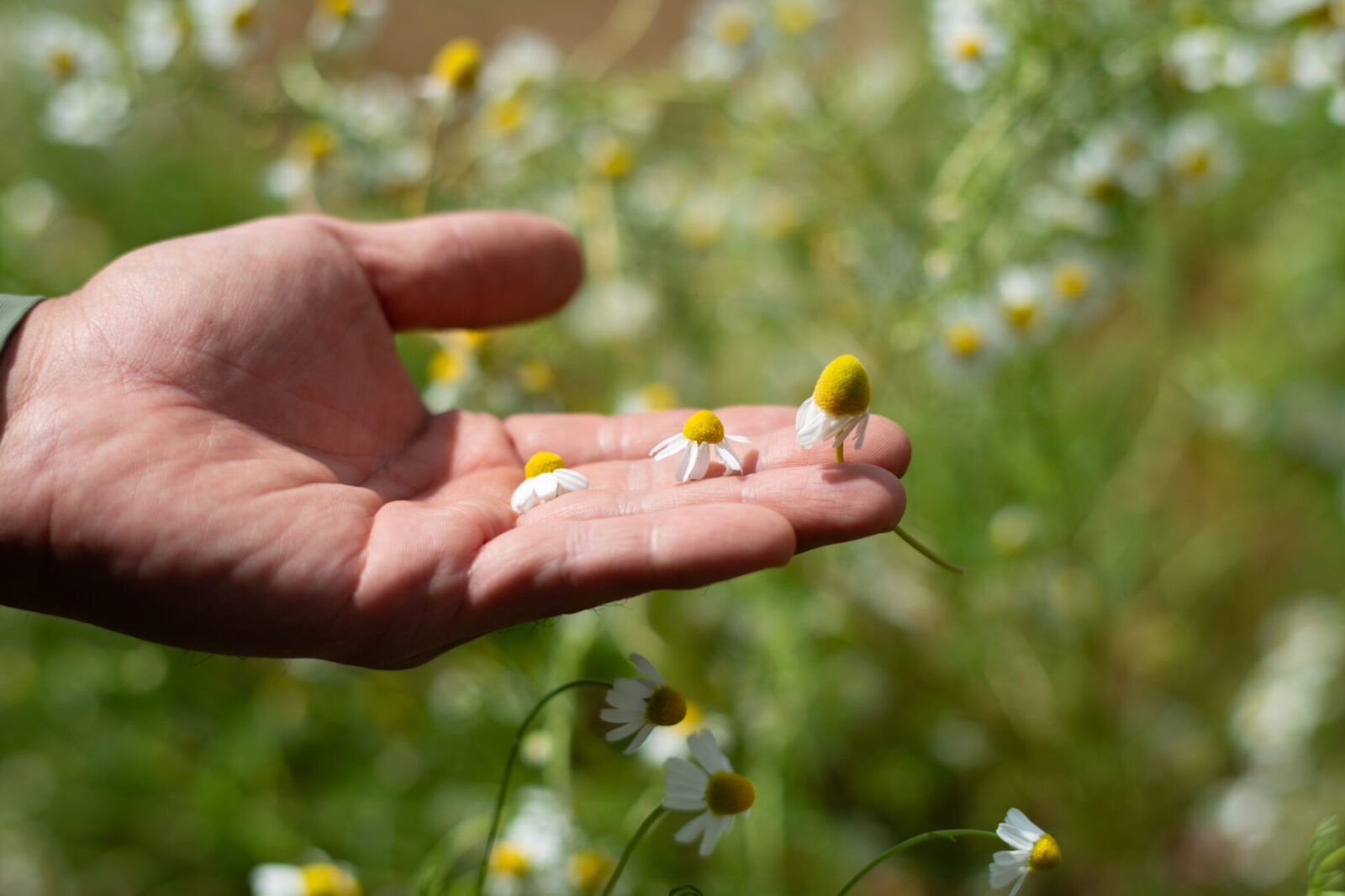
Another key point in preventing a bitter herbal tea finish is to avoid any part of the plant, such as the stem and leaves, to be mixed in with the flowers.
To test the difference, we tried biting into both a young and mature tubular flower. The smaller flower had a more juicy, sweet and fresh flavor and tasted delicious on its own.
Because we were not used to the work yet, after two hours we had only harvested about one meter of the chamomile plants. The row is 50 meters long and we could see that the plants were all in full bloom into the far distance.
Although we felt anxious that we would not be able to finish harvesting within our given time the next day, we parted ways with Sawabe for the day and decided to have a cup of freshly harvested chamomile tea.
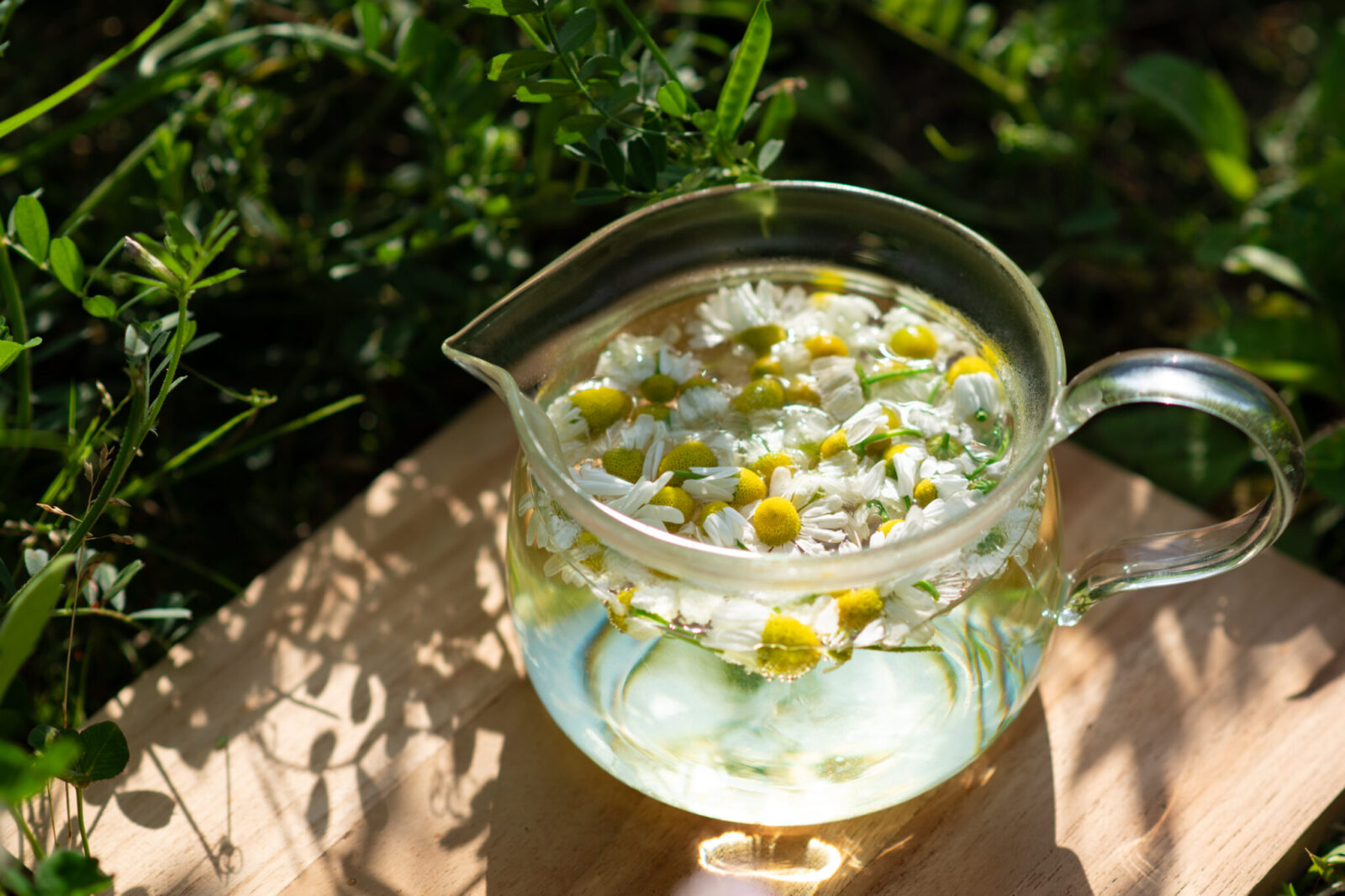
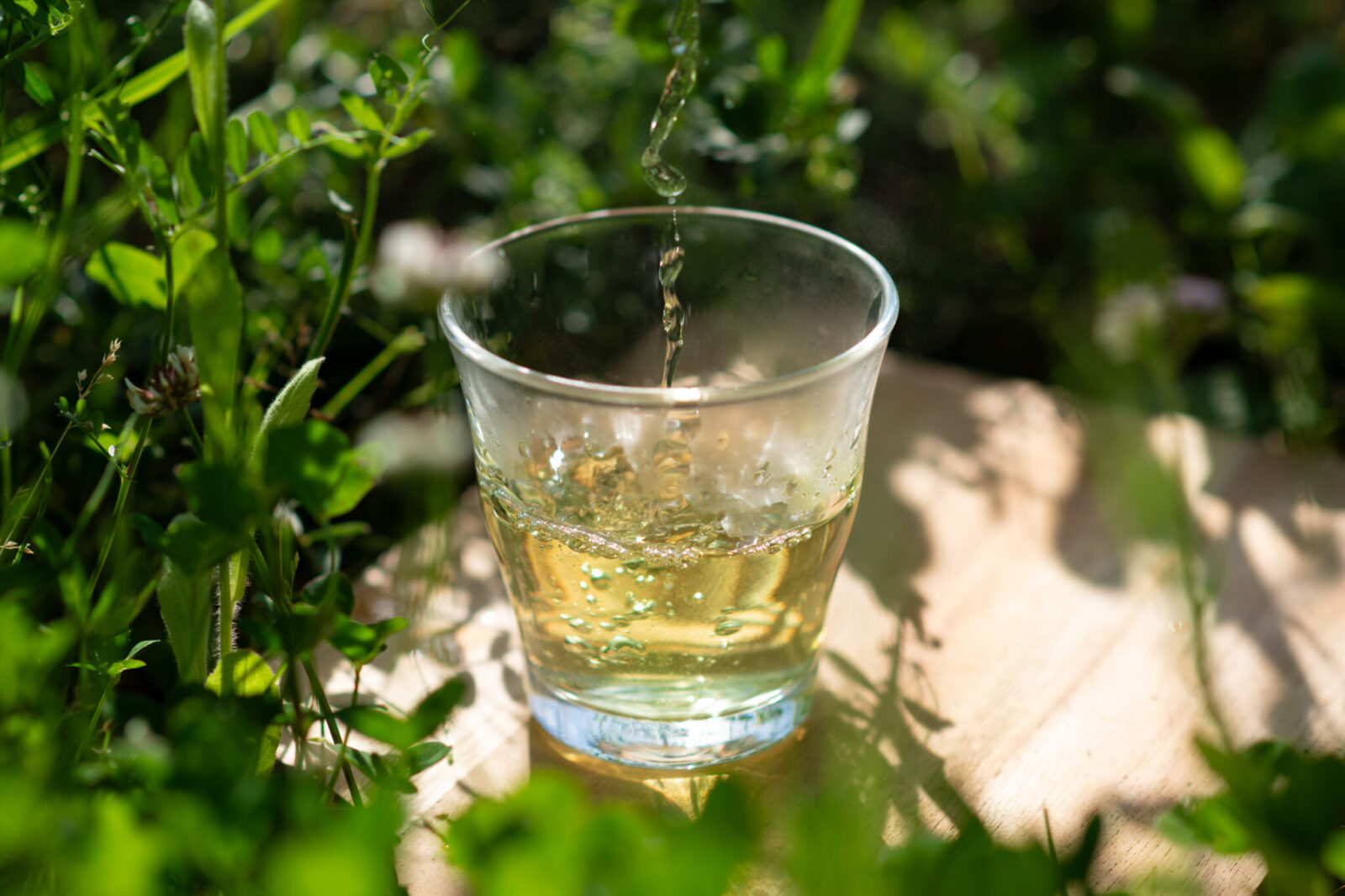
We found a grassy area near the field to hold a small tea party.
We put the freshly picked chamomile flowers in a pot and filled it with boiling water. The amount of flowers we used was about a small handful. After waiting 5 minutes for it to brew, the chamomile tea turned a fresh golden color.
The moment you take a sip, the refreshing fragrance of the flowers fill your mouth.
Chamomile tea has a fruity and sweet flavor and some products feel a little too sweet. However, the freshly picked flowers had a very delicate and refreshing flavor making it easy to drink multiple cups.
The experience of drinking freshly picked herbal tea in a setting that was surrounded by rich and comforting nature was very satisfying. The time passed quietly and peacefully.

Herbs change with the climate and their uniqueness shines through
Our second day of work was warmer than the first, and the forecast said the temperatures would rise to summer levels. Additional members from the DIG THE TEA team joined in and we got to work with harvesting more chamomile.
Our goal for the day was to pick all the remaining chamomile flowers by 14:00 o’clock, when Sawabe would deliver the flowers to the freeze-drying factory.
We actually did not start working until 10:00 o’clock, but thanks to having a bit of practice from the day before and being pushed for time to finish our goal, we worked faster and more diligently.
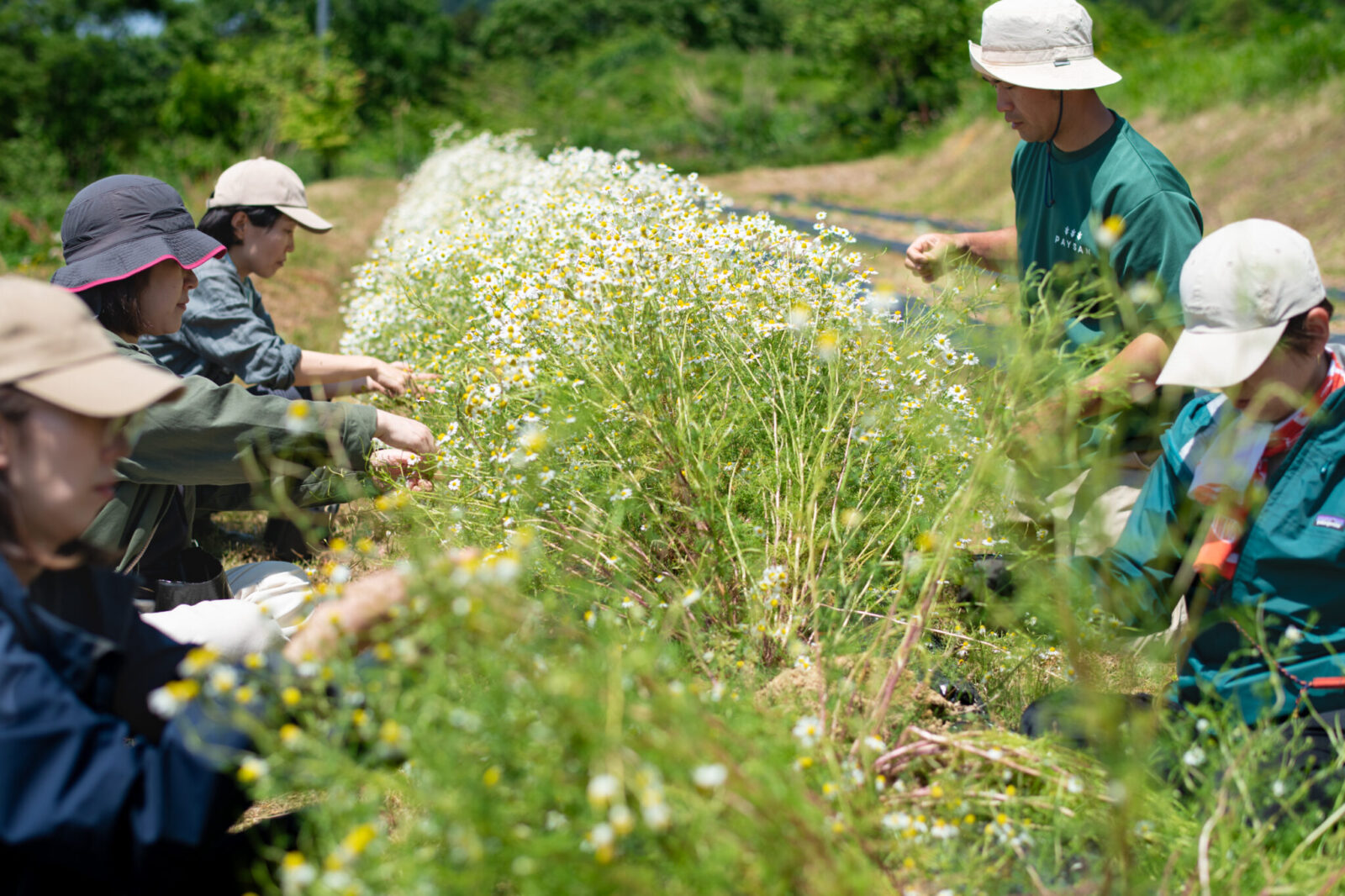
Concentrating on the task on hand, while occasionally chatting and laughing, we never stopped moving our hands.
The work itself is not strenuous, but there are so many flowers on one plant that it takes time and seems to take forever to move just a single meter.
In the end, we could not finish the entire row and about ¼ of the plants were not harvested, but there was a deep satisfaction after seeing the heaps of chamomile flowers loaded in the harvest container.
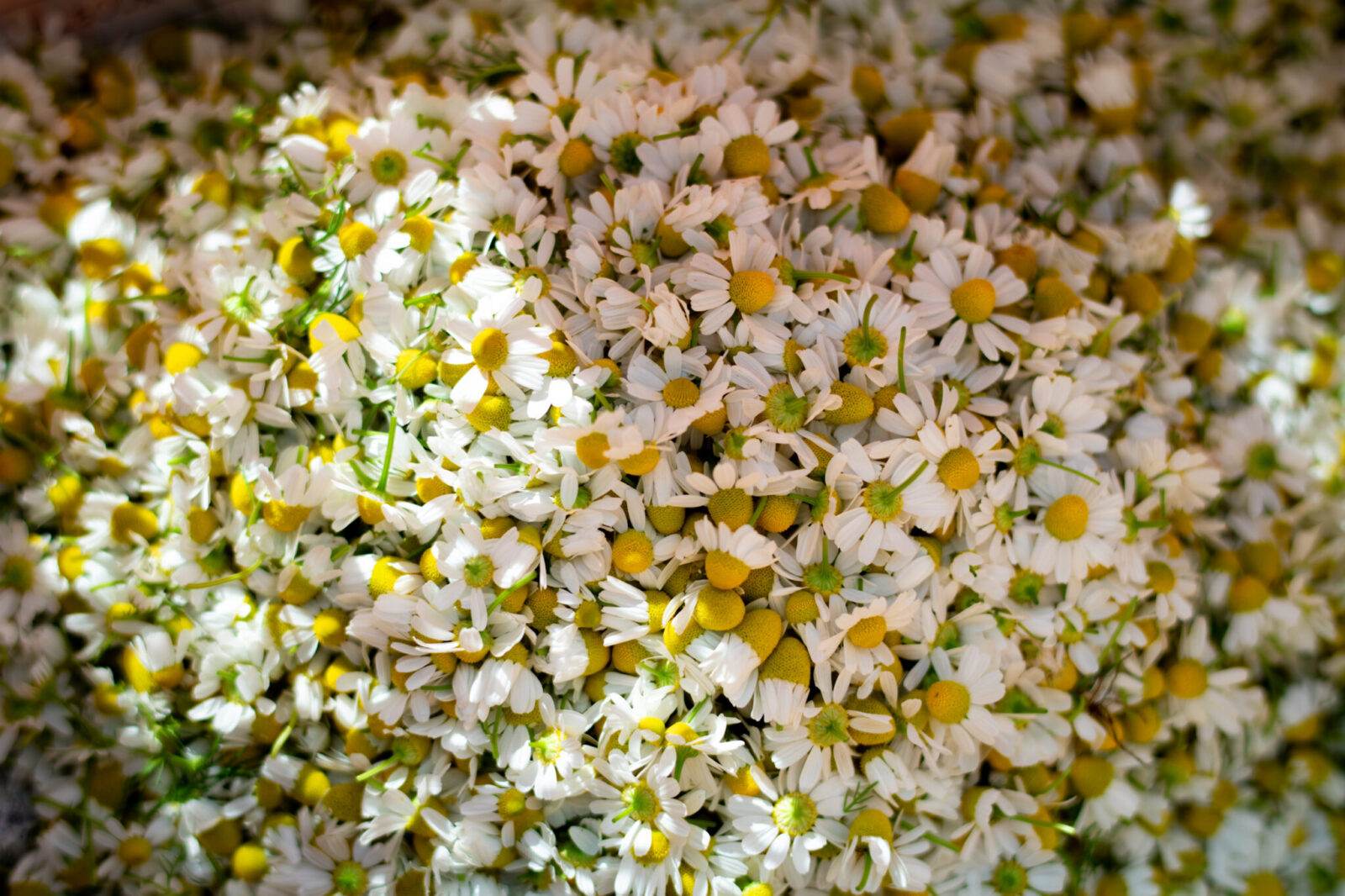
We served Sawabe some fresh chamomile tea before he took off to deliver the harvest to the factory.
We asked if there was a difference in flavor with the chamomile they harvest in the Kahokugata Lagoon.
“This chamomile has a very refreshing flavor. I usually find chamomile tea to be sweet with a lingering heavy flavor. However, this chamomile is more fresh and light compared to what we harvest in the Kahokugata Lagoon. It tastes a bit more like herbal medicine or scented herbs.”
“I look forward to seeing how it tastes after it is freeze dried. The chamomile from Kahokugata Lagoon is better served hot, but this chamomile from Hakusan may be better for cold brews. I think this difference in flavor comes from the difference in climate, water and soil of each region.”
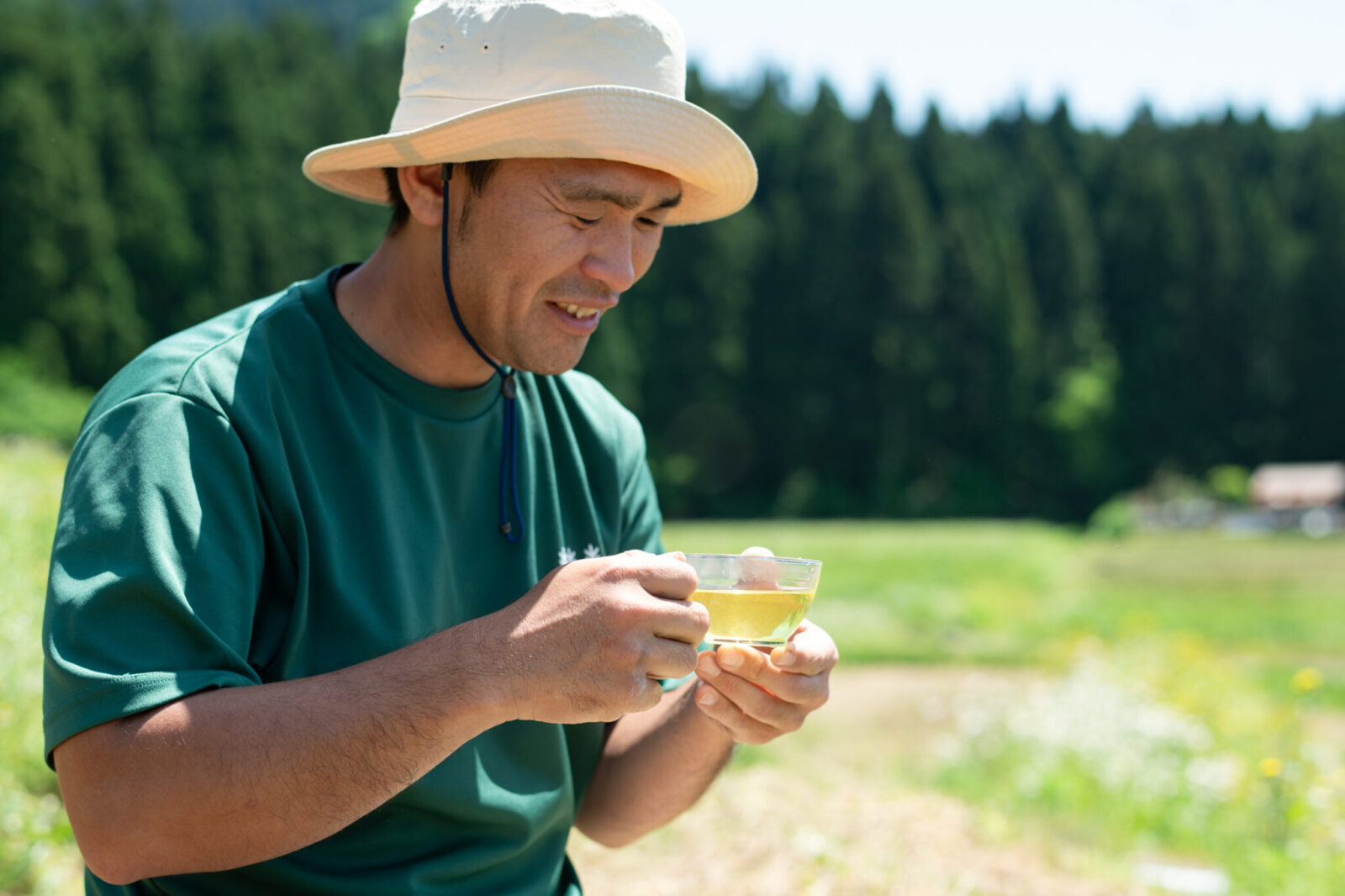
Sawabe understands the differences in the climates well so he can identify the unique characteristics of the chamomile raised in this Hakusan region. We look forward to how the other herbs and plants we planted on this trip will develop and express the uniqueness of this land.
With a deep sense of gratitude for all his help, we saw Sawabe off as he left to deliver the harvest to the freeze-drying factory and our two day mission for this trip was complete.
We held another little tea party before we also headed home. The chamomile flowers we took home as souvenirs continued to fill the air with a warm scent and soothed our hearts throughout the journey home.
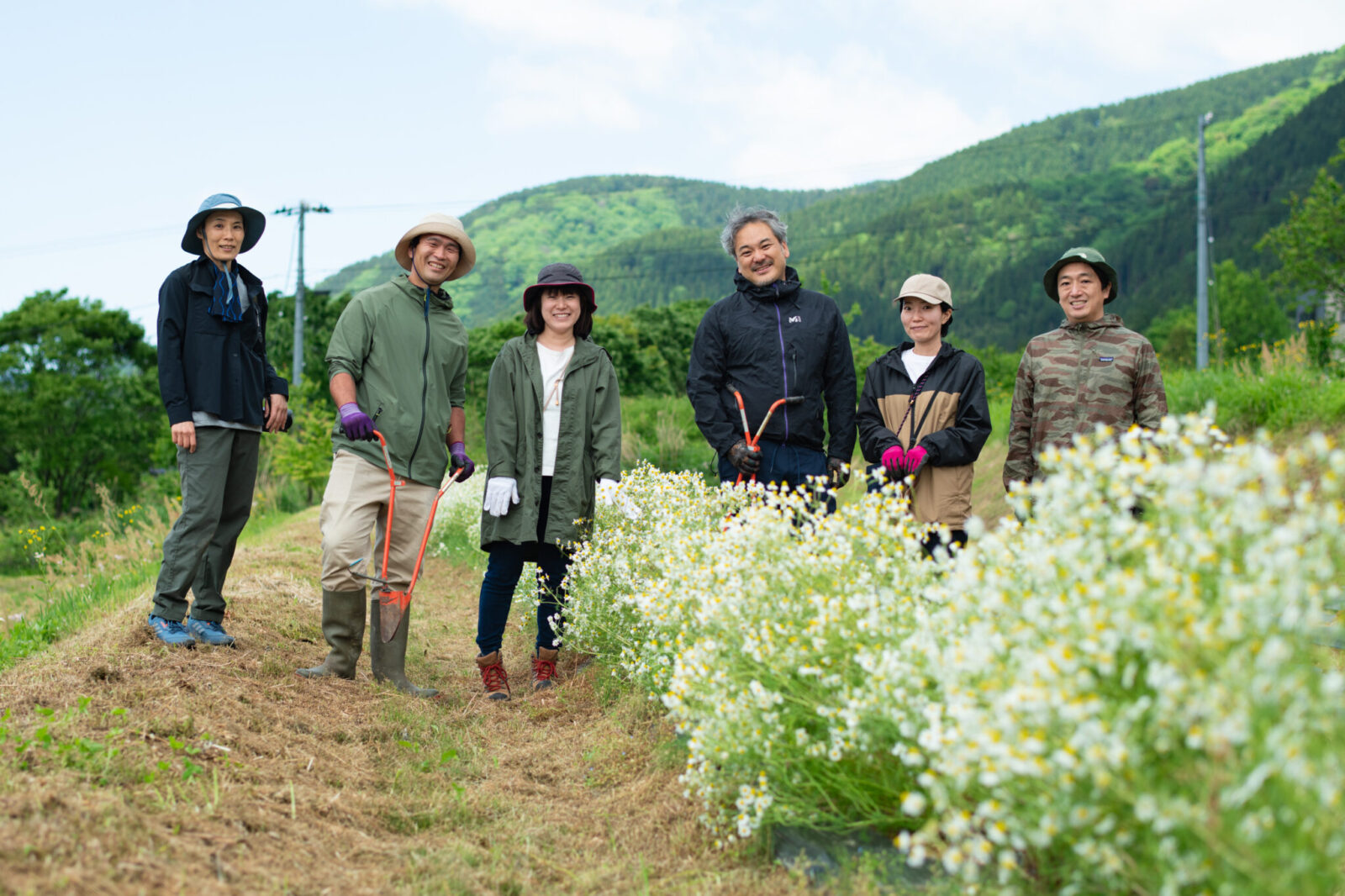

The hops and herbs that we planted are scheduled to be harvested this summer.
We shared our ideas and desires on what we want to do next with Sawabe while we worked together on this trip.
Working in the rich natural environment while experiencing the climate first hand gave us many ideas on how to expand the possibility of herbs. DIG THE TEA’s experimentations will continue.
Translation: Sophia Swanson
Lives in Tokyo, Japan. Became independent after working as an editor for online media sites “MYLOHAS” and “greenz.jp” and magazine “sotokoto”. Edits and writes for magazines, online media, books, and other media outlets, as well as corporate websites, on themes such as sustainable manufacturing, community development, and working styles. Also acts as director and buyer for the online store and media “ichijitu” which offers everyday products and tools that assist in everyday life.
Editor. Born and raised in Kagoshima, the birthplace of Japanese tea. Worked for Impress, Inc. and Huffington Post Japan and has been involved in the launch and management of media after becoming independent. Does editing, writing, and content planning/production.
